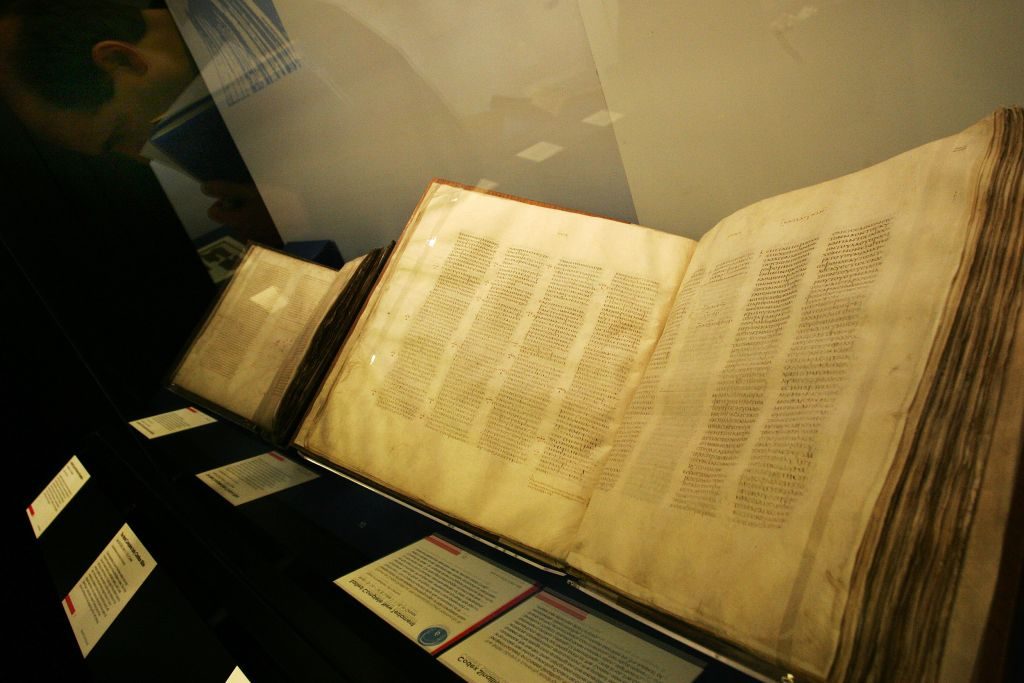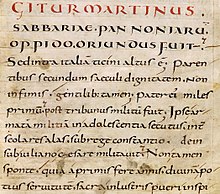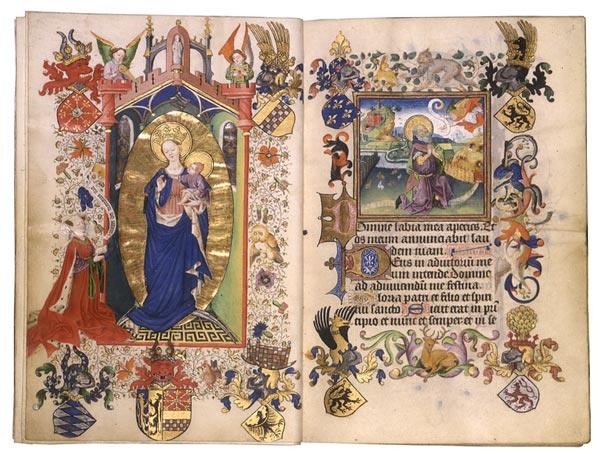God and Gutenberg (0-1450)
Summary:
Since 0 BC, the written word has progressed from manuscript bibles to the invention of printing and typography. In the second century, parchment, prepared animal skin, was invented in Pergamon, Turkey. Parchment was less translucent than papyrus, meaning it could be written on both sides, unlike papyrus which could only be written on one side, but it was more expensive than papyrus so even after parchment was invented, the Romans still used papyrus. However, even though papyrus was cheaper, papyrus scripts were being replaced by codices in the second century. Codices (“codex” for singular) were any manuscripts or books that were created before printing was invented- everything in the book was written by hand. Many codices were related to religion as Christianity was taking over the Pagan religion and this conversion led to many decorative books. These include the St. Cuthbert Gospel, Book of Hours, and Celtic Psalter. In the twelveth century, Fabriano, Turkey, was the centre of paper-making in Europe. They learned how to make paper from learning from Chinese paper-makers who were kidnapped along the Silk Road and brought to Turkey.
Soon, printing came into play. Wooden blocks were used to print- just as the Chinese did with their wooden relief printing blocks- block books, broadside keepsakes, and playing cards. In the 1440s, Johan Gutenberg came up with the idea of using moveable type. The moveable type consisted of letters that could be put together in any order for print. Again, the Chinese had already accomplished this- a man named Bi Sheng invented types that could be glued together to print and by using a “lazy Susan-ish” idea, he could find the right types.
I find the journey from hand-copying texts to create new books to the invention of printing an experience. It is exciting to see how similar modern books are to codices and the steps it took for inventions to build upon each other and reach this level of technology.
Research:
For this time period, I was assigned to the topic of “culture” and have decided to further explore Christian literature of that time period and what their decorative books contained.
In the first 400 BC, codices and scrolls coexisted, but codices more often contained Christian writing while scrolls usually had Pagan works. Christianity used books and literature to accomplish their goal of a universal religion, which of course, was their own religion. They produced streams of works, including biblical texts and translations, commentaries, polemical tracts, and pamphlets. By the fourth century, Christian books had replaced Pagan literature in every form.

https://static.timesofisrael.com/www/uploads/2015/08/AP_07042509396.jpg
So why were religious texts popular during this time period?
Much of medieval literature was focused on religion because of works that were written by the Greeks were not preserved in Europe. There were few models of classical literature to learn and move beyond from. Thus, when Christianity began producing many religious works, these religious texts dominated literature of the period.
One subset of Christian literature were hagiographies. These hagiographies were present in the first 1000 years of the Early Christian church and they were about biographies of saints or highly developed spiritual beings. However, these are not like biographies we see today. They were written in hopes of influencing readers and had a sociological purpose rather than an informational one. Hagiographies glorified the people that Christ had powerfully worked and usually omitted the sins and/or wrongs the person had committed. Despite these omissions, this genre was important as a hagiography provided informational history and many inspirational stories and legends.

https://upload.wikimedia.org/wikipedia/commons/thumb/7/70/Caroline_2.jpg/220px-Caroline_2.jpg
Another important subset of Christian literature was Christian theology. In the early sixth century, the development of Christian theology was influenced by an unknown writer under the name of Dionysius the Areopagite aka Pseudo-Dionysius. Theology is the study of the nature of God and religious beliefs. It was a philosophically oriented discipline of religious speculation and was a spiritual or religious attempt of “believers” to analyze and explain their faith. Many theologians during that time period became interested in what truths about God that could be established by reason alone. This was called natural theology and it was opposed to revealed theology, which was the acceptance of revelations. This discipline became particularly important between the Christians on one side and the Jewish and Muslims on the other.

https://theologyforum.files.wordpress.com/2011/06/cambridge-dictionary.jpg
Christian literature is a broad topic that encompasses many different types. These include books about philosophy, plays, lyrical poetry, biography, narrative writings, novels, and more. However, both hagiographies and Christian theology are important and prominent genres in Christian literature. Each aims to strengthen the faith in God and Christianity in their own different ways.
_
References:
- Judy’s Lecture Notes
- Unwin, Philip Soundy, et al. “History of Publishing.” Encyclopædia Britannica, Encyclopædia Britannica, Inc., 8 Mar. 2018, www.britannica.com/topic/publishing#ref28605
- Louth, Andrew, and Helmut Thielicke. “Theology.” Encyclopædia Britannica, Encyclopædia Britannica, Inc., 8 Dec. 2014, www.britannica.com/topic/theology#ref284061
- “Hagiography.” Proclus of Constantinople – OrthodoxWiki, orthodoxwiki.org/Hagiography

